- Makeda Cheatom
- http://www.worldbeatcenter.org
- Founder / Executive Director
- Developing the Processes and Potential to Engage Historically Underrepresented Communities in Public Participation in STEM Research Through Authentic and Impactful Collaboration
- https://noiseproject.org/
- WorldBeat Cultural Center
- Cecilia Alvarez
- Founder
- Developing the Processes and Potential to Engage Historically Underrepresented Communities in Public Participation in STEM Research Through Authentic and Impactful Collaboration
- https://noiseproject.org/
- Yao Foli
- Founder
- Developing the Processes and Potential to Engage Historically Underrepresented Communities in Public Participation in STEM Research Through Authentic and Impactful Collaboration
- https://noiseproject.org/
- Marilu Lopez Fretts
- Bilingual Community Outreach Specialist
- Developing the Processes and Potential to Engage Historically Underrepresented Communities in Public Participation in STEM Research Through Authentic and Impactful Collaboration
- https://noiseproject.org/
- Karen Purcell
- http://noiseproject.org/
- Project Director
- Developing the Processes and Potential to Engage Historically Underrepresented Communities in Public Participation in STEM Research Through Authentic and Impactful Collaboration
- https://noiseproject.org/
- Cornell Lab of Ornithology
- Berenice Rodriguez-Moran
- Community Outreach Coordinator
- Developing the Processes and Potential to Engage Historically Underrepresented Communities in Public Participation in STEM Research Through Authentic and Impactful Collaboration
- https://noiseproject.org/
- WorldBeat Cultural Center
- Bobby Wilson
- CEO
- Developing the Processes and Potential to Engage Historically Underrepresented Communities in Public Participation in STEM Research Through Authentic and Impactful Collaboration
- https://noiseproject.org/
Public Discussion
Continue the discussion of this presentation on the Multiplex. Go to Multiplex







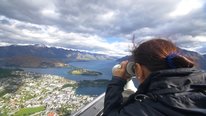
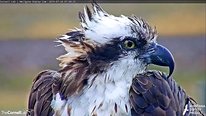
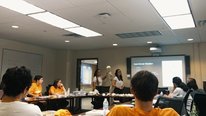
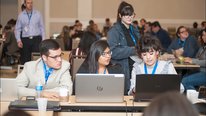
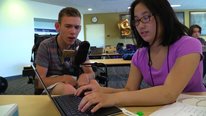
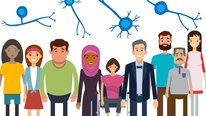
Karen Purcell
Project Director
Thank you for watching our video! We would love your thoughts and questions on our project.
What happens when STEM research and programming is led directly and equitably by community leaders?
In the Noise Pollution Project (https://noiseproject.org) a team of Community Researchers representing communities historically excluded from the sciences, in collaboration with the Cornell Lab of Ornithology, share a different perspective and approach for doing science “with” communities instead of “on” communities.
For the first time, four community leaders share the role of co-principal investigators, gaining direct access to the scientific enterprise, including practice and dissemination of STEM research and programming by those who are impacted, fostering greater equity, diversity and inclusion.
Join us in our journey as we document the equitable co-creation of a continental Community Science Project that benefits the participating communities!
¡Gracias por ver nuestro video! Nos encantaría escuchar sus comentarios y preguntas acerca de nuestro proyecto.
¿Qué ocurre cuando la investigación y programación de STEM es dirigida directa y equitativamente por líderes comunitarios?
En nuestro Proyecto de Contaminación Acústica (https://noiseproject.org/es/homepage-es/) un equipo de investigadores comunitarios que representan a comunidades históricamente excluidas de las ciencias, en colaboración con el Laboratorio de Ornitología de Cornell, comparten una perspectiva y un enfoque diferentes para hacer ciencia "con" comunidades.
Por primera vez, cuatro líderes de la comunidad comparten el rol de investigadores co-principales, obteniendo acceso directo a la empresa científica, incluyendo la práctica y la difusión de la investigación y programación de STEM por aquellos que se ven afectados, fomentando mayor equidad, diversidad e inclusión.
¡Únase a nuestro esfuerzo mientras documentamos la co-creación equitativa de un Proyecto de Ciencia Comunitaria continental que beneficia a las comunidades participantes!
Kate Goss
Ashik Rahaman
CarlaDean Caldera
Marilu Lopez Fretts
Jeffrey Ram
En nuestro Acuario, redujimos los "efectos de sonido" en nuestra exhibición de anguila eléctrica al hacer que los pulsos que produce la anguila emitan sonido solo cuando el espectador presiona un botón. Mantiene a los visitantes interesados y reduce el nivel general de ruido (entre visitantes) en nuestras instalaciones. En nuestro video, en un momento, escuchas "pop, pop, pop" en el fondo. ¡Uno de los niños debe haber apretado el botón!
Karen Purcell
Project Director
¡Fantástico! Muchísimas gracias por compartir. Qué buena idea y bello video.
Karen
Bobby Wilson
CEO
On behalf of the NOISE Project Team, we would like to welcome you to our 2020 Video for All Showcase, where our theme is “Community Researchers Lead Science Project Equitably”. Thank you for watching and for sharing your feedback.
There are a few key words/phrases that I would like to highlight: co-creation, access, understanding power and privilege, and most importantly, having a seat at the table.
It has been through this NOISE Project that many of us have gained a clear understanding of what it means to co-create. We realize how important it is that all voices are heard and have equal value at the table. We now have a better perspective and understanding of power and privilege. We understand that for people of color power is very difficult to obtain because those who are in power don’t want to share the power. As people of color, we are not usually born into privilege. However, many are born with privilege. What we know is that those who are born with privilege inherit power. And for those of us who are without power and privilege, we want to gain an equal access to those things that are a human right and create a healthy society for all.
It does me no good to be given the opportunity to sit at the table and not be able to speak truth to power. This NOISE Project has afforded me access to a seat at the table. Therefore, I welcome the opportunity to sit at (your) the table. And I welcome you to the 2020 Video for All Showcase.
Bobby Wilson, CoPI
CEO, Metro Atlanta Urban Farm (MAUF)
Karen Purcell
Kate Goss
Ashik Rahaman
CarlaDean Caldera
Marilu Lopez Fretts
Joyce King
This is a wonderful example of "Science for (all) the People". Keep up the good work.
Karen Purcell
Marilu Lopez Fretts
Fletcher Chmara-Huff
As a science educator, and researcher, I want to thank you for reminding us of the importance of the A. STEAM builds bridges, and makes science less scary, and reaches new partners. I myself produce an arts festival about water issues every year. Which has a far broader audience than a peer reviewed publication. Beautiful work.
Karen Purcell
Marilu Lopez Fretts
Makeda Cheatom
Founder / Executive Director
Thank you so much for your comment. Here at WorldBeat Center we’ve produced an annual Multi-Cultural Earth Day celebration for over 30 years. We’ve been engaged in STEAM and built community by bringing the arts and science together. It’s really important to have festivals because you get to engage the general audience with the message of STEAM. Years ago people of color in San Diego thought that science was for the dominant culture and could never be included or represented in the sciences. When we received the award from NSF it made them so proud to engage in citizen science. Noise and air pollution have always affected our communities from the factories, the freeways, the ports, and so on. Noise pollution is something the underserved community has lived through. This research gives a voice to the voiceless. Everyone in this project takes pride in working together in equity, diversity and inclusion.
Karen Purcell
Ashik Rahaman
CarlaDean Caldera
Marilu Lopez Fretts
Miyoko Chu
I really admire how everyone in this project is approaching co-creation. Co-creation is so complex and challenging--especially, I imagine, with multiple communities involved! Your video shows how powerful--in some cases essential--it can be for meaningful engagement and outcomes.
Karen Purcell
Sara Yeo
Assistant Professor
Great project! I'm curious about how you and your team are evaluating the project? What are the goals for the project and how do you determine "success" (i.e., achieving those goals)? Thanks!
Marilu Lopez Fretts
Tina Phillips
Hi Sara, thank you for your question! We are working with three extremely talented external evaluators that are experts in culturally responsive evaluation and community based participatory research. They have been instrumental in helping to guide our collective efforts and articulate our goals. Each community has unique goals they hope to achieve through this work, but as a collective we are all committed to achieving increased diversity, inclusion, and equity in the sciences as well as documenting the processes for how this is done between community based organizations and science institutions. Our evaluators are using a multitude of strategies to help us define, articulate, and demonstrate the successes as well as challenges of this work.
Sara Yeo
Ashik Rahaman
Marilu Lopez Fretts
Karyl Askew
Sara, thank you for your questions and lifting evaluation in this conversation. We echo Tina’s response. Defining success is an on-going, community-centered conversation. Our team’s culturally responsive and equitable evaluation approach works alongside the partners' community-based participatory research (CBPR) process. The community, their working agreements and framework are driving the CBPR and the evaluation. Central to our work is lifting and centering community voice in the evaluation process. For us, this means having an on-going bidirectional conversation about the evaluation. One strategy we used with this community was to support the development of individual roadmaps (akin to logic models) for each community organization focused on their activities, products, and outcomes. During evaluation meetings, community organizations provided feedback to each other. The NOISE community feedback is being used to inform a full project roadmap to facilitate their vision of success.
Karyl Askew, Monifa Beverly, and Daniella Cook (The NOISE Project Evaluation Team)
Sara Yeo
Marilu Lopez Fretts
Ashik Rahaman
Sara Yeo
Assistant Professor
Thank you for your responses. A quick follow-up: How many communities are currently involved and how are projects for each community identified?
Karen Purcell
Project Director
Sara, there are 13 communities involved - located throughout North America. I am not sure I understand your question about 'identifying' projects in each community. Each community has complete ownership and leadership of their involvement in the research and programming and creates projects that make sense for their priorities and realities. Each community has a slightly different focus - wellness, policy change, education, equity, monitoring, health, etc... And all the participating communities also have the common desire to "move the needle" on the way that science is done! As a project we want to make real change in who has equitable access to science and research and whose voices are heard.
Nancy Shapiro
Associate Vice Chancellor
Your video communicates a warm and inclusive project--congratulations for illustrating the importance of community engagement. I can imagine you had some real challenges in the beginning--I'd love to hear how you would describe some of the challenges of engaging the community and how you overcame those stumbling blocks. I am wiling to bet that your description of the process will be a major learning to share with the NSF community--as important as the outcome. (One technical note--the voiceover did not match the captions--so I found myself missing the narrative of one or the other when I switched my focus.) Thanks for an inspiring project description.
Kate Goss
Ashik Rahaman
Marilu Lopez Fretts
Berenice Rodriguez-Moran
Community Outreach Coordinator
Greetings Nancy,
Thank you for your comments. This project is particularly unique because it is community led. Thanks to a previous NSF grant we have a set of tools that we created and have put into practice in this project. About 7 years ago we did a Community-Based Participatory Research project on Equity, Diversity and Inclusion within collaborations between Informal Science Education institutions and Community Based Organizations. As CBOs we realized we all had shared experiences working with ISEs and decided to create a survey where we could reach out to other CBOs from across the country and identify common themes within the STEM field. From here we identified problems and solutions to building equitable collaborations. We also developed our own Community Review Board rules as well as Working Agreements based on the Jemez Principles. The Noise Project has been an opportunity to put it all into practice. One of our initial struggles was putting everyone up to speed and making sure that everyone felt comfortable with the Working Agreements. These Agreements guide us and one of the most important agreements we practice is making sure everyone's voice is heard. With so many of members of various backgrounds and experience we've found that it's important that we create various opportunities for all of us to share and value everyone's message. When building a partnership trust is also important and it's taken time. As CBOs we've already built it from the previous grant and it took time for new members to understand the richness of the project and engage in a way that they felt like they owned it too. We've spent a lot of time processing and have documented the entire process and I think it will not only empower our communities but also serve as an example for STEM collaborations.
COVID-19 has shown the resilience of our communities. Within our project community organizations immediately prioritized the needs of their communities while also creatively continued the project. Here at WorldBeat Center we addressed the lack of masks and healthy foods within our marginalized communities. Meanwhile when the social distance mandate came in we were also in the midst of editing our video and we had to allow ourselves time to take care of our families. We had to readjust and learn to work virtually with our editor and it wasn't as easy as we hoped. WorldBeat Center has many years of video production experience but we had not done editing virtually. It took many of our staff to get involved and some of us even had to learn Final Cut. We had to constantly adjust and work out what was possible in order to meet the deadline. One of those adjustments was that we wanted to share various voices with strong messages while also sharing what we thought was an important script. We plan on producing an extension of this video where we can better address both.
Thank you for understanding.
Karen Purcell
Kate Goss
Ashik Rahaman
Marilu Lopez Fretts
CarlaDean Caldera
Nancy Shapiro
Associate Vice Chancellor
Thanks for this great discussion. I am glad you are publishing/disseminating what you are learning in the process--I think it is so important to embed Community based research into civic life of communities. Good luck!
Ashik Rahaman
Marilu Lopez Fretts
Sydney Stepney
Awesome video and what an amazing project! Thank you for contributing to Black excellence as you change the trajectory of food agriculture.
Marilu Lopez Fretts
Marilu Lopez Fretts
Bilingual Community Outreach Specialist
Thank you all for your comments! I work with the Cornell Lab and with our community partners in this co-created science project. One of the greatest outcomes I have learned from communities leading the NOISE Project is that different perspectives bring wholeness to science work. Their voices bring perspectives to problem solving from practical and lived experiences. We, as an informal science institution would not have come up with the diverse and creative solutions that the communities we are working with bring to the project.
Equitable co-creation takes time, lots of effort to make it happen and in the end, it is the best approach! Communities know what’s best for them. When they are part of the decision making, there is better decision making. We have everything to gain when communities are included from the beginning, when we use our power and privilege to share access to work together equitably.
Stephen Alkins Ph.D.
Karen Purcell
Ashik Rahaman
Bobby Wilson
CEO
Equity, diversity and inclusion. The NOISE Project. What a tool to bring science within reach of the historically marginalized communities! Because of the NOISE Project, disadvantaged communities are learning that our communities are more adversely affected and suffer more health challenges because of NOISE.
There is more stress in our communities. There is more hypertension in our communities. There are more cardiovascular diseases in our communities. There is more COVID-19 in our communities.
All these maladies can be attributed directly to NOISE pollution in our communities. As a first-time CoPI and a person of color, I am engaged in a national research project and the co-creation of change based on equity, diversity and inclusion. Because of funding provided by the National Science Foundation, we are able to use the NOISE Project as a tool to engage youth and communities in the sciences.
Bobby Wilson, CoPi
CEO, Metro Atlanta Urban Farm (MAUF)
Noiseproject.org
Stephen Alkins Ph.D.
Karen Purcell
Ashik Rahaman
Marilu Lopez Fretts
Catherine Haden
What are some examples of ways that each of the "communities uniquely defines how we carry out our research"? Are there some efforts to ensure some common measurement of what you target as key outcomes?
Marilu Lopez Fretts
Bilingual Community Outreach Specialist
Hi Catherine,
Thank you for watching our video!
Each of the communities we are working with uniquely defined the research based on their priorities. For example, Allentown is focusing on public policy and working with the city, College Park is focusing on the social justice of noise pollution and how it is affecting their community, San Diego is focusing on health and healing and St. Paul is focusing on education.
We believe that genuinely doing research together (co-creating the questions, co-creating the protocols of data collection, and co-analyzing and interpreting the data) is better. Our questions and analysis include each community’s diverse views. The communities disseminate the results in ways that make sense for them - their priorities and realities. That is something that our institution, or any institution, could not do, disseminate and use the results in unique ways that are relevant to each community. Communities know what’s best for themselves. They are the experts at engaging their communities in ways an institution is not able to.
An institution can come up with one project for all and disseminate results in a general way… a “cookie cutter” approach will not work. That is why it is so important that all the voices are represented in the research.
When you ask about a common measurement, who would determine this?
Our project prioritizes diverse communities’ values to inform the work we do and re-inform the questions, analysis and dissemination. We, as a group, work closely with a team of culturally responsive evaluators that facilitate each group’s vision of success.
We are very excited about documenting this process as we explore doing equitable research using CBPR, guided by community perspectives and recognizing the influence of power and privilege, and the effects and manifestations (often times subtle or invisible) of institutional racism that have created the existing barriers in traditional research.
Kate Goss
Ivory Toldson
President
Very well done. I appreciate that you highlighted the importance of the people who are involved in your project. Further, the importance of not only community involvement but allowing the community to drive your work.
What challenges have you faced thus far and how have you addressed them?
Marilu Lopez Fretts
Karen Purcell
Project Director
Hi Ivory, we hope to change the scientific enterprise so that it is not scientific institutions that "allow" the community to drive the work - but that it is an equal exchange of expertise! We've had lots of challenges - because this work couldn't be done without them. Comfort with discomfort is part of the work. I would say that some of the deepest challenges we have had have been understanding how institutional racism manifests and how to overcome inherent inequities that are so deeply ingrained they have become part of the system. You can learn more about our work focused on identifying challenges and tools by looking at our ICBO Workbooks for Science Institutions and Community-based Organizations: http://power30icbos.blogspot.com/2019/03/our-workbook-for-community-based.html
Kate Goss
Marilu Lopez Fretts
Dean Grosshandler
Karen, thank you for posting the links to the workbooks -- my community partners and I have found them incredibly helpful in our work together.
Thanks to you and the rest of the team for your ongoing work!
Karen Purcell
Project Director
Thanks for letting us know Dean! We really appreciate it.
Annica Bullard
As a college student, I believe this is a great way to contribute to equity, diversity and inclusion for all and I hope to see more things like this in the future. Thank you all so much.
Makeda Cheatom
Marilu Lopez Fretts
Karen Purcell
Project Director
Thank you Annica!
CarlaDean Caldera
What a wonderful project! Noise pollution is a topic that is rarely discussed. Our air holds a lot. It is good to hear of the diverse communities involvement and the impact the knowledge gained has provided for them.
Makeda Cheatom
Marilu Lopez Fretts
Karen Purcell
Project Director
Thank you CarlaDean!
Scott Balicki
Fantastic project! I am very touched by your model of doing science "with", rather than "on" the community. Do you anticipate being able to measure any changes in public health, for example reduced hypertension, in your community in the future?
Kate Goss
Karen Purcell
Project Director
Hi Scott, Thanks for your comment. At this point we will be focusing on measuring noise decibels and perceived stress, and promoting wellness through connection with nature in community noise refuges. The participating communities are putting their efforts in education, policy change, equity, and promoting wellbeing. We would love to also measure public health indicators like hypertension in the future, but it is probably beyond the scope of our project for now. A great deal of the work we are doing is also focused on documenting the co-creation of equitable processes and identifying barriers and opportunities.
Marilu Lopez Fretts
Sarah Dunton
Your team has created an incredible project that appears to incorporate every aspect of STEM/STEAM, as well as community engagement. You've brought much needed attention to the value and impact of citizen science!
Makeda Cheatom
Marilu Lopez Fretts
Ashik Rahaman
Juan Flores
Sin duda un proyecto de ciencia ciudadana, hecho por la comunidad para la comunidad. La contaminación acústica un problema que te afecta a tí y a tu Comunidad.
Marilu Lopez Fretts
Karen Purcell
Project Director
Gracias Juan!! Es un honor tener a Green Jay Mayan Birding como un de nuestros increíbles socios del proyecto.
Marilu Lopez Fretts
Kate Goss
What an inspiring model for us to follow; I can see the heavy lifting on the front end and the resulting joyful, empowered community resulting.
Your work is of particular interest because I am starting a DEI/ community-led citizen science program with a focus on students in 4th-6th grade. I hope to develop a student citizen science to community leadership pipeline, focusing on issues the communities identify.
Any insights, references, or best practices you could share on co-creation and how communities come together to identify issues would be much appreciated. Clearly you (collectively) have been successful!
Marilu Lopez Fretts
john annoni
Hi Kate, I am a full time grade 6 educator (31 years) and a Co principal investigator on this project. Without getting to elaborate here I definitely can give you insights on both sides of the bridge. We do have some resources that can steer you found at http://power30icbos.blogspot.com/?m=1 The journey you will undertake will be a bumpy but fulfilling one. Hoping the best for your vision and the people it will change.
Marilu Lopez Fretts
Karen Purcell
Kate Goss
Kate Goss
Thank you, John. I've been looking through the materials and deeply appreciate your sharing them. Excellent guideposts and resources for this essential process of co-creation.
Marilu Lopez Fretts
john annoni
Thanks and great to hear. Stay safe, healthy and encouraged.
Marilu Lopez Fretts
Rebecca Atadero
I am an engineering educator, and I wonder if you have any advice for undergraduate programs to help us better prepare our students to work in community based projects?
Karen Purcell
Project Director
Hi Rebecca, there are a lot resources in our community blog: http://power30icbos.blogspot.com and on our website: https://noiseproject.org/resources/. Please feel free to reach out to any of us at any time if you'd like to chat!
Marilu Lopez Fretts
Ashik Rahaman
Stephen Alkins
I am happy that the NSF is moving in a direction that recognizes and understands what equity is and is investigating and investing in projects like this. I am happy to see DEI throughout every phase of the project including the development of the questions and the dissemination of the results back through the communities so that they know the impact of their investment. Thank you for sharing!
Karen Purcell
Marilu Lopez Fretts
Bobby Wilson
CEO
Equity. Diversity. Inclusion. Can a ship sail without a captain? Can a plane fly without a pilot? Can a vegetable crop produce itself without a farmer? Just as the ship’s captain must be able to adapt to changing conditions and respond to emergency situations, and the pilot must be able to navigate through turbulent flight conditions and determine the safest route in times of crisis, so must the farmer also be able to understand the science of the seasons and their impact on planting and harvesting. What each of these scientists have in common—the captain, the pilot and the farmer—is that they all have the ability to lead, analyze, calculate, determine and communicate the outcome based upon access to scientific information and an established protocol of patterns and predictability. Science is everywhere. Science is what guides the NOISE Project, an NSF-funded collaboration between Cornell University and four independent community-based organizations across the United States. Good leadership recognizes the need to adapt to changing conditions, to respond to emergency situations, to navigate through turbulent conditions. Good leadership also recognizes when it is time to change our course in the middle of a global pandemic. Just as Covid-19’s impact has been more acute among people of color and other marginalized communities, so has the impact of NOISE. As farmers, must we continue to plant our crops amid Covid-19, we must continue to plant seeds in the minds of our youth by exposing them to the “fields” of science. The study of NOISE pollution and community involvement in the NOISE Project is a direct result of good leadership. It will be the leadership of citizen scientists that will produce the next generation of captains, pilots and farmers, etc. Good leadership will ensure that the NSF comes to acknowledges past patterns and predictability that have led to blatant inequities and a lack of minority representation in the science “fields”. Now, through successful collaborations with large institutions, ICBOs are gearing up to lead the collaborations. And with continued funding from the NSF, we can begin to co-create a new reality—one that is based on equity, diversity and inclusion from the bottom up.
Ashik Rahaman
Marilu Lopez Fretts
Karen Purcell
Bobby Wilson
CEO
Out of many bad situations, we can usually find some good. With a global pandemic topping the charts as the number one bad, one of many good things that I have been able to see and hear more clearly are the birds. They are singing louder; they are flying more freely. In my opinion, they appear to be happier.
My hope during this pandemic is that minds will be opened. Those with the power and the privilege will have fewer beliefs of entitlement blocking their view and will be able to see our society from a different perspective and see science through a lens from which they’ve never seen it before. Equity, diversity and inclusion.
My hope is that those who sit in high places will be able to see the farmers through a more scientific lens. Right now, we see the farmer differently from the captain who sails the ship. We see the farmer differently from the pilot who flies the plane. We fail to realize that both the captain and the pilot rely on the scientific skills of the farmers to produce healthy fruit, vegetables and other forms of agriculture that they need to maintain a sound mind and body for the jobs they perform.
I want to remind you that STEAM is a part of what the farmer does every day. We are environmentalists. We are food producers. We are mentors for the next generation that will enter the science fields.
Did you realize that, as farmers, we need to calibrate the amount of space it takes to grow cantaloupes and watermelons? I have concluded that, as a farmer, science is an integral component of what we do.
My hope is that out of Covid-19 will appear opportunities for people of color to have equal access to participate in the science programs at your institutions. By ensuring that this becomes a reflection of our “new norm”, I truly believe that we will not have to go through another long-term pandemic like the coronavirus. It is also my hope that we will start building our science programs from the bottom up and not continue to build from the top down, providing equal access on the bases of equity, diversity and inclusionn.
This is my message to you for today.
Marilu Lopez Fretts
Ashik Rahaman
Karen Purcell
Angel Davis
This project is awesome. I’m glad Tri-Cities High School students are a part of such a great cause! Thank you Mrs. Turner and Ms. Rasheed for leading our students.
Marilu Lopez Fretts
Karen Purcell
Project Director
The Tri-Cities High School Community Science Collaborators are one of the most wonderful aspects of our project. They are incredible!! Such knowledgeable and capable leaders. We are grateful to have them be part of the project. And enormously grateful to Mr. Wilson, Mrs. Turner and Ms. Rasheed!!
Marilu Lopez Fretts
Phyllis Turner
Words don't come close to expressing the depth of my appreciation for the opportunity to be a part of this project.
As an educator, I am humbled to be able to offer this tremendous opportunity to my students. As a parent of two adult sons, I relive certain aspects of their academic journey almost daily when I think about missed opportunities. It could have been due to lack of access, lack of inclusion. At this point, my story could take off in so many different directions. But gratitude keeps me looking towards the future with hope.
Suffice it to say that I am forever changed by my involvement with the NOISE Project. My students' trajectory is forever changed by their involvement and association with Metro Atlanta Urban Farm, Cornell University Lab of Ornithology, the National Science Foundation, and every single individual who has directly or indirectly deposited renewed hope into them by way of the NOISE Project.
Who are they? The Junior Community Science Collaborators? They are members of the Tri-Cities High School National Beta Club. And they are the face of every minority, every urban child, every person of color who ever had a desire to break the glass ceiling, but didn't know how or think it was possible, to dare to dream of success in STEM/STEAM careers. Because of the NOISE Project, the scientists, ICBOs, project investigators, project evaluators, CoPIs, community science collaborators, and every other career that is represented on this project, all of the youth are finding inspiration and motivation to reach beyond the low-hanging fruit to the possibilities they now know exist and are waiting for them as they prepare to stand among the next generation of scientists.
If I start calling names, I'll surely miss someone. So, thank you, NOISE Team!
Ashik Rahaman
Karen Purcell
Project Director
Phyllis, you are making me cry! The NOISE Project would not be what it is without your leadership and dedication. Thank you for all you do. We are going to change the way science is done!!!
THANK YOU!!
Makeda Cheatom
Founder / Executive Director
Greetings,
The STEM Video Showcase is coming to an end and it makes the ICBOs feel so grateful that the community people and science researchers have together with the single goal of bringing Diversity, Equity and Inclusion into STEM/ STEAM Research. Let's continue this dialogue beyond this week's inspiring showcase event. People of color need to be included in all aspects of a STEM grant project from beginning to end. With COVID-19 America has changed, in fact the world has changed so have to get creative and use Science, Technology, Engineering, Arts and Mathematics to create unity in our nation and across the world.
Thank you so much to everyone who contributed in this meaningful and rich dialogue!
To keep following our project visit our website (noiseproject.org)